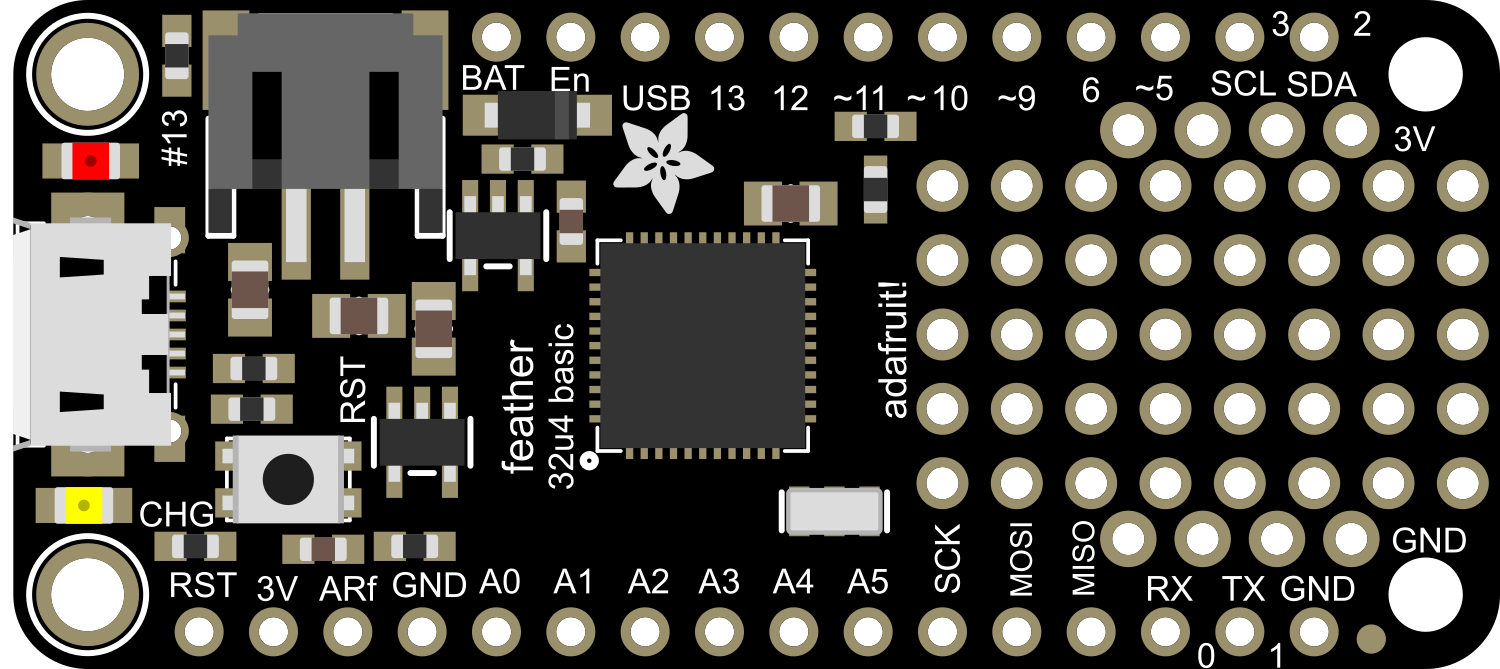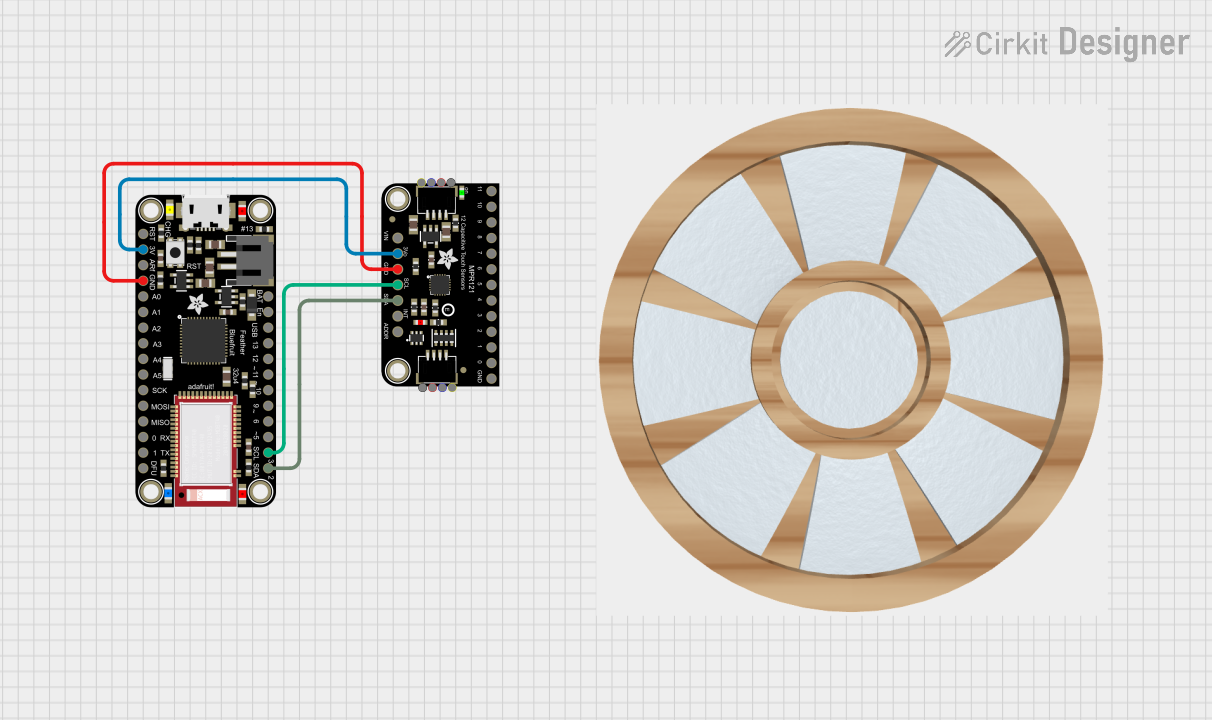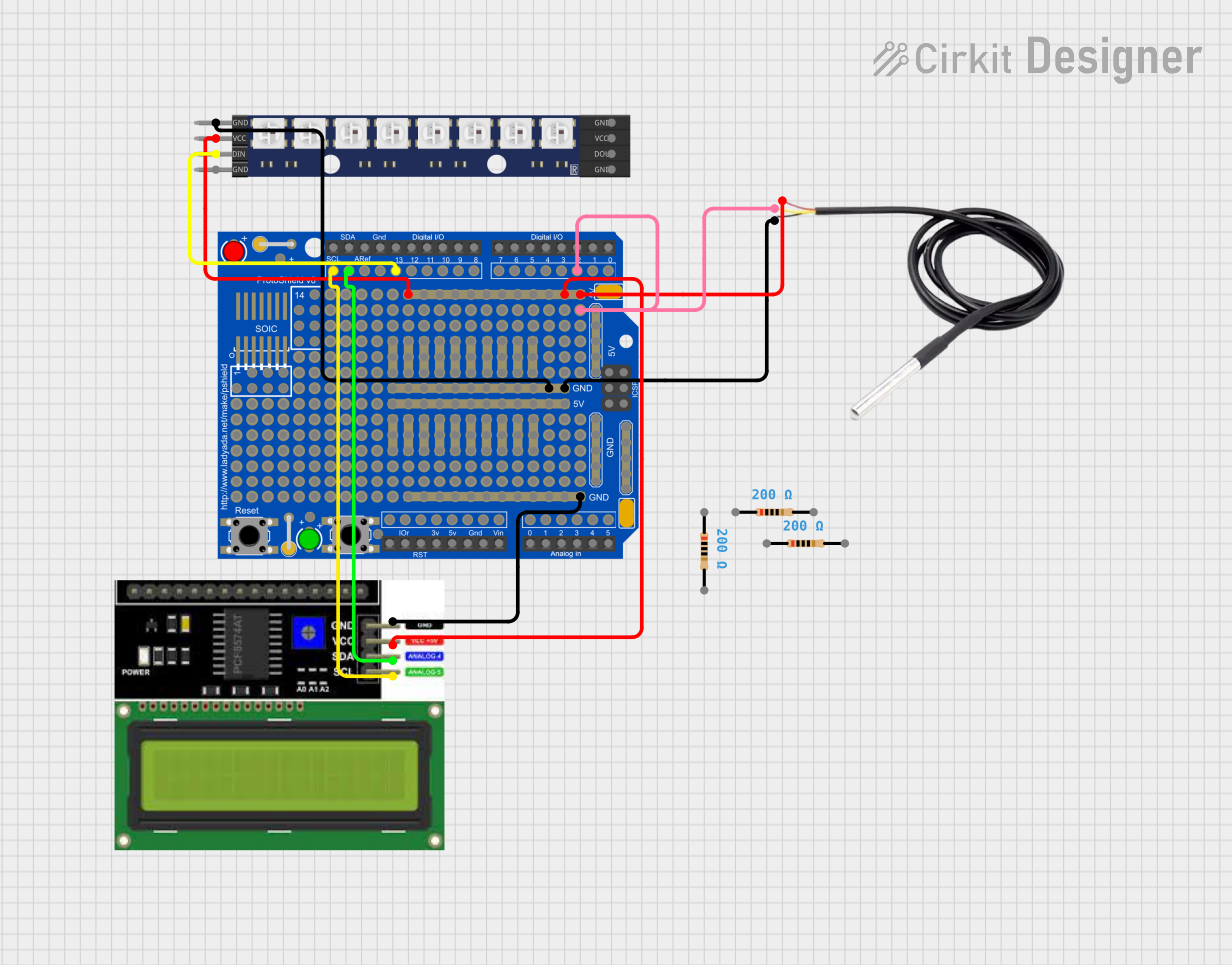
How to Use Adafruit Feather 32u4 Basic Proto: Examples, Pinouts, and Specs

 Design with Adafruit Feather 32u4 Basic Proto in Cirkit Designer
Design with Adafruit Feather 32u4 Basic Proto in Cirkit DesignerIntroduction
The Adafruit Feather 32u4 Basic Proto is a versatile and compact development board that combines the convenience of the Arduino environment with added features for prototyping and project development. It is based on the ATmega32u4 microcontroller and is designed for makers and hobbyists who need a lightweight, yet powerful platform for their electronic projects. Common applications include wearable devices, IoT projects, and custom embedded systems.
Explore Projects Built with Adafruit Feather 32u4 Basic Proto

 Open Project in Cirkit Designer
Open Project in Cirkit Designer
 Open Project in Cirkit Designer
Open Project in Cirkit Designer
 Open Project in Cirkit Designer
Open Project in Cirkit Designer
 Open Project in Cirkit Designer
Open Project in Cirkit DesignerExplore Projects Built with Adafruit Feather 32u4 Basic Proto

 Open Project in Cirkit Designer
Open Project in Cirkit Designer
 Open Project in Cirkit Designer
Open Project in Cirkit Designer
 Open Project in Cirkit Designer
Open Project in Cirkit Designer
 Open Project in Cirkit Designer
Open Project in Cirkit DesignerTechnical Specifications
Key Technical Details
- Microcontroller: ATmega32u4
- Operating Voltage: 3.3V
- Input Voltage: 3.7-6V via battery and up to 12V via the USB or VIN pin
- Flash Memory: 32 KB (ATmega32u4) of which 4 KB used by bootloader
- SRAM: 2.5 KB (ATmega32u4)
- EEPROM: 1 KB (ATmega32u4)
- Clock Speed: 8 MHz
- Digital I/O Pins: 20
- PWM Channels: 7
- Analog Input Channels: 12
- DC Current per I/O Pin: 40 mA
- DC Current for 3.3V Pin: 500 mA
- MicroSD card slot for data storage
- MicroUSB port for power and programming
Pin Configuration and Descriptions
| Pin Number | Function | Description |
|---|---|---|
| 1 | GND | Ground |
| 2 | BAT | Battery + |
| 3 | EN | Enable pin for regulator |
| 4 | USB | USB raw voltage (4.5-5.5V) |
| 5 | 3V3 | 3.3V regulated output |
| 6-13 | Digital I/O | Digital pins D0-D7 |
| 14-19 | Analog Inputs | Analog pins A0-A5 |
| 20 | AREF | Analog reference voltage |
| 21 | SCK | SPI clock |
| 22 | MISO | SPI Master In Slave Out |
| 23 | MOSI | SPI Master Out Slave In |
| 24 | SS | SPI Slave Select |
| 25 | RXLED | RX LED, active low |
| 26 | TXLED | TX LED, active low |
| 27 | SDA | I2C Data |
| 28 | SCL | I2C Clock |
| 29 | RST | Reset pin |
Usage Instructions
Integrating with a Circuit
To use the Adafruit Feather 32u4 Basic Proto in a circuit:
- Connect the board to your computer using a microUSB cable.
- Ensure that the board is recognized by your computer and the appropriate drivers are installed.
- Use the Arduino IDE to program the board. Select "Adafruit Feather 32u4" from the Tools > Board menu.
- Connect your peripherals to the GPIO pins, taking care to match the voltage levels and current capabilities.
Best Practices
- Always disconnect the board from power sources before making or altering connections.
- Use the onboard prototyping area to add components and make connections securely.
- Avoid drawing more than 500 mA from the 3.3V pin to prevent damage to the voltage regulator.
- When using battery power, ensure the battery voltage is within the specified range.
Troubleshooting and FAQs
Common Issues
- Board not recognized: Ensure the microUSB cable is data-capable and the drivers are installed.
- Sketch not uploading: Check the selected board and port in the Arduino IDE. Press the reset button on the board and try again.
- Unexpected behavior: Verify the power supply and ensure that all connections are correct and secure.
FAQs
Can I power the board using a battery? Yes, you can power the board using a 3.7V LiPo battery connected to the BAT pin.
What is the maximum voltage for the analog inputs? The maximum voltage for the analog inputs is 3.3V.
How do I use the microSD card slot? You can use the microSD card slot for data logging or storage by using the SD library available in the Arduino IDE.
Example Code for Arduino UNO
// Blink example for Adafruit Feather 32u4 Basic Proto
void setup() {
pinMode(13, OUTPUT); // Initialize the LED pin as an output
}
void loop() {
digitalWrite(13, HIGH); // Turn the LED on
delay(1000); // Wait for a second
digitalWrite(13, LOW); // Turn the LED off
delay(1000); // Wait for a second
}
This example code will blink the onboard LED of the Adafruit Feather 32u4 Basic Proto. Make sure to select the correct board from the Tools > Board menu in the Arduino IDE before uploading the code.